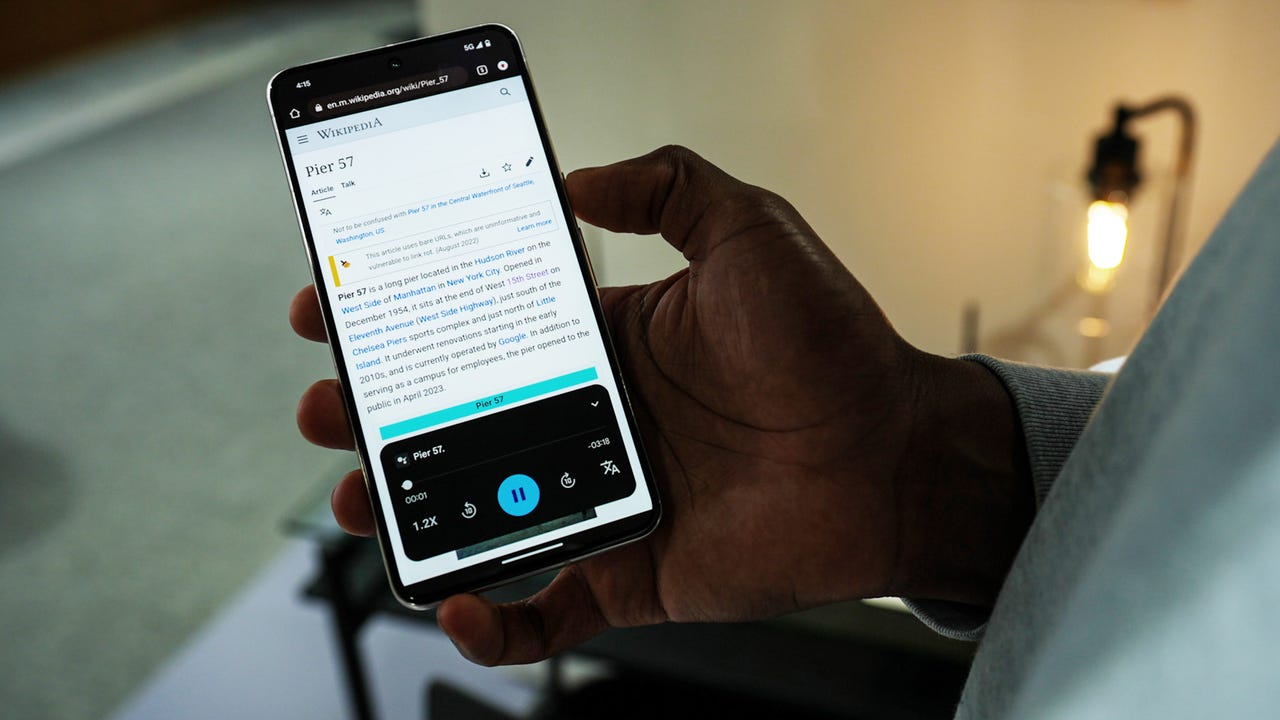Google Assistant is having a Windows Copilot moment, and it's all thanks to AI

Voice assistants were the pinnacle of AI about a decade ago, but with the rise of generative AI, they have remained somewhat obsolete. Despite needing an upgrade, Google has neglected its voice assistant to pursue more ambitious projects like its Google Bard chatbot -- until now.
Also: Google Pixel 8 Pro hands-on: Five features that have me excited
At its Made by Google event on Wednesday, the company gave some much-needed TLC to its Google Assistant, infusing it with new AI features that expand its capabilities for users. The new features even make Google Assistant stand out from those found on other smartphones. Here's the breakdown.
Assistant with Bard
The biggest announcement of the event was that Google Assistant is going to be infused with Bard to become a more personalized digital assistant -- Assistant with Bard.
With this upgrade, instead of just being limited to voice commands, Google Assitant will be able to help users complete tasks thanks to greater contextual awareness, from understanding text and images on screen to processing audio clips.
Also: 4 AI-powered photo and video features on Pixel 8 and Pixel 8 Pro giving us Google envy
For example, Google says that the upgraded Assistant will be able to help plan your next trip, help sort through your inbox, complete tasks in Google Docs, or write a caption based on an image.
The demo showed a user asking where their friend's party was and Assistant with Bard populating the address quickly in Maps by gathering relevant information from the user's emails.
The Pixel 8 series' Tensor G3 chip provides the handsets with several exclusive AI features.
The capabilities of the Assistant with Bard will be even more integrated for Android devices, allowing for more contextual experiences. The Assistant with Bard conversational overlay feature will be able to use visual cues to provide users with the answers they need, serving a variety of use cases.
Assistant with Bard will be available on both iOS and Android users in the "next couple of months", and because it's still in its early stages, it will roll out to early testers soon to get their feedback before the public launch. Details on how to opt-in to early testing are not yet available, but Google says to "stay tuned" for that information.
More natural voice commands
Next, Google tackles one of the most annoying problems with voice assistants -- its failure to understand what users say when dictating a text. This issue typically forces users to use very calculated, almost robotic speech when dictating a text to ensure they are understood.
Now, Google Assistant understands more natural conversation and can even pick up on natural pauses such as "ums" without including them in the final transcription.
Also: Less typing, fewer mistakes: How Gmail Snippets can save you time and effort
In addition, when you are dictating your message, you will be able to write messages twice as fast, eliminating the typical lag there is between you speaking and the assistant processing what you said.
Google Assistant will also optimize your phone call experience with Pixel Call Assist, which can even answer calls for you (sort of).
With the new Call Screening feature, when phone calls are initially screened, Google Assistant can listen to the person talking and give you suggestions with auto-responses using the context of a call. Then, when you select a response, the Google Assistant will use a natural, realistic-sounding voice to speak to your caller.
For example, if your doctor's office calls to confirm an appointment, the Assistant may generate an option allowing it to say, "Yes, I will be there" for you when selected, without you even having to answer the call yourself.
"Summarize" is a new Assistant feature that recaps all the text in a webpage.
Google Assistant has also been optimized to detect and filter more spam calls, giving you a heads-up of which phone calls you may want to avoid.
Summarize and Read Aloud
Lastly, to help you browse the internet, Google Assistant can take webpages and summarize them into key points, read them aloud, and translate them for you.
Also: Google, Yahoo to battle spam with new rules for bulk emails
Although the ability to have a webpage read to you may not sound groundbreaking, Google AI allows the Assistant to understand what elements of the webpage are a logo and which are ads, so that they are omitted when read aloud or in summaries.
From the brief demos at the event, the ZDNET team found the Read Aloud feature especially impressive, with the reader's voice sounding more like that from an audiobook instead of the generic robotic-sounding playback.
